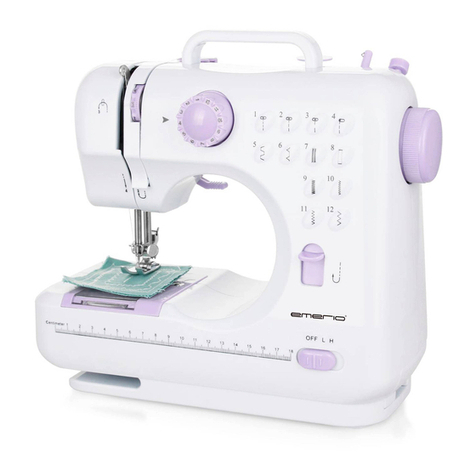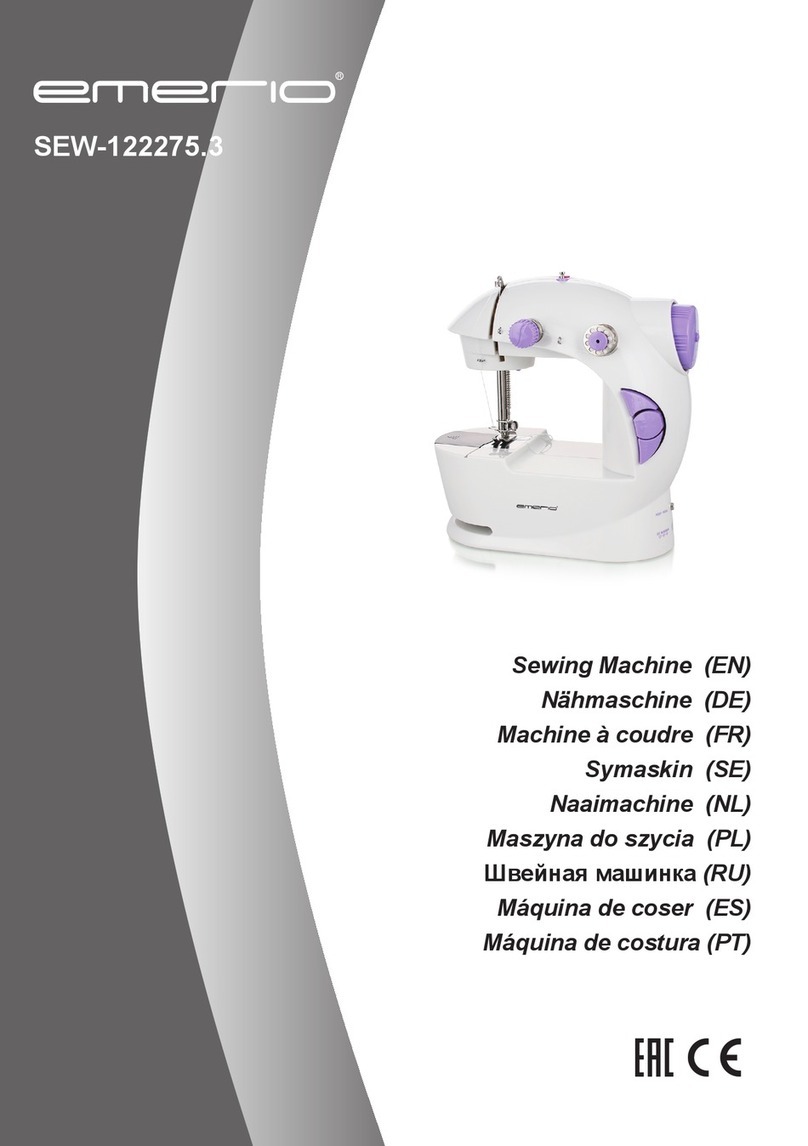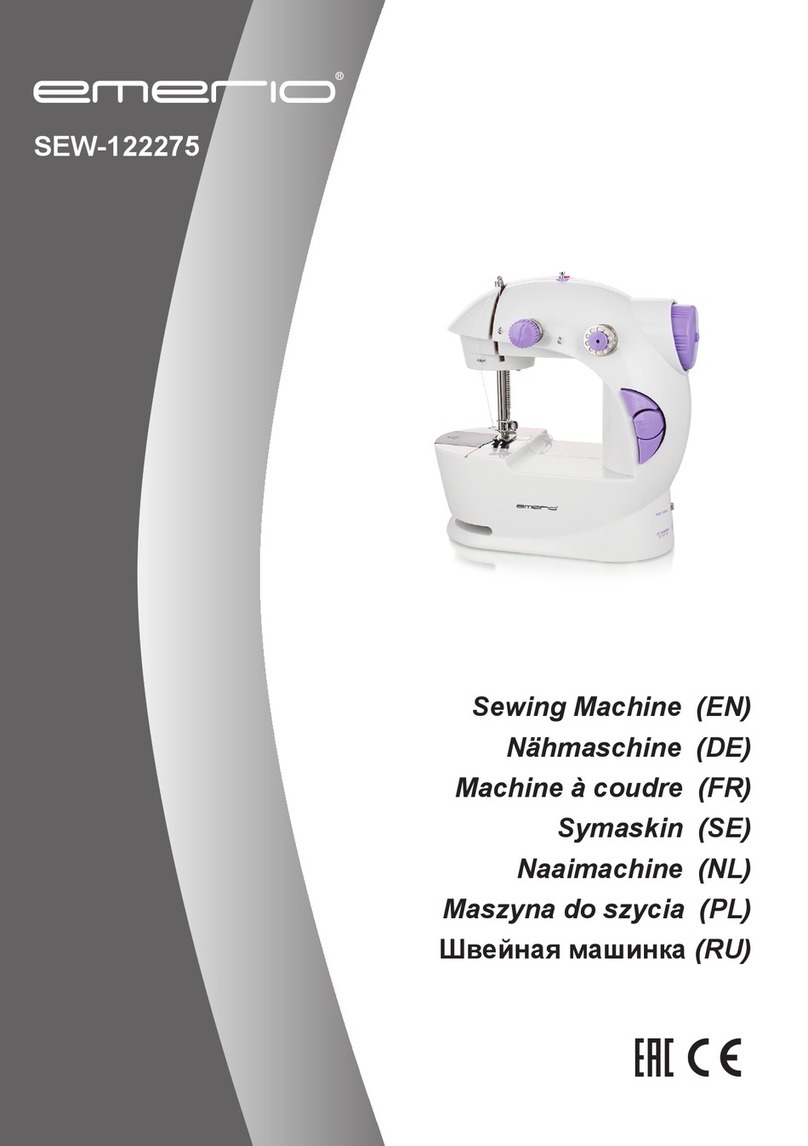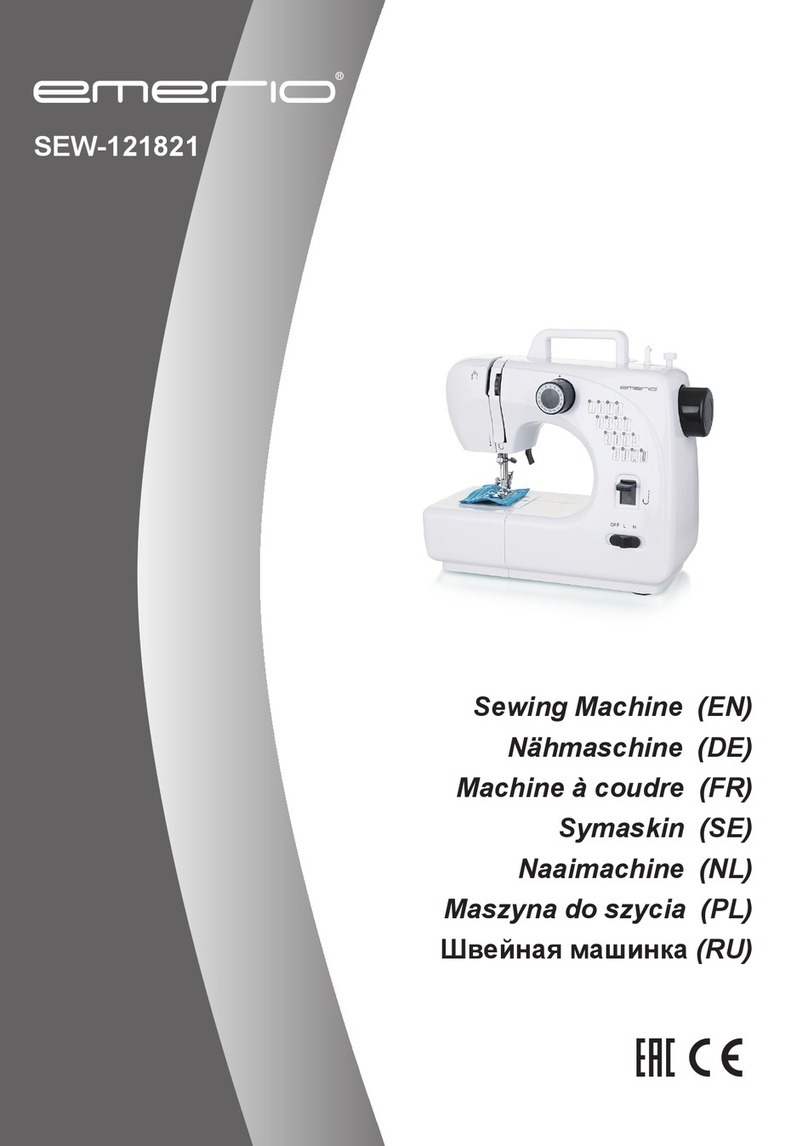
- 5 -
After removing the appliance from the packaging box:
1. Make sure the power on/off switch is in off position before inserting batteries.
2. Put 4 AA batteries into the battery compartment.
3. Press the power on/off switch to turn on the appliance. The unit will start sewing immediately. Be sure the
appliance is properly threaded and the fabric is positioned for sewing before you turn on the unit.
4. Warning! When using the adapter, remove all batteries from the appliance.
THREADING THE APPLIANCE
This appliance works with two threads. One is the top thread. The thread is from the side bobbin or the thread
spool. The other one is the bottom thread. The thread is from the bottom bobbin.
Top thread:
After removing the appliance from the packaging box, you’ll find the appliance is threaded already (see the
direction of 1-8 shown in the picture). You can directly use the side bobbin to start sewing. Alternatively, you
can use the thread spool you purchase separately to start sewing:
Step 1: Raise the thread spindle by grasp the exposed top and pull upward until the thread spindle is fully
extended out.
Step 2: Place a thread spool on the thread spindle.
Step 3: Pull out the thread from the thread spool and put it through the thread guide rings, tension adjusting
screw, take-up lever, needle clamp and the needle, based on the direction of 2-8 shown in the picture.
Caution! When the thread goes over the needle it must be put through the hole from the left to right. Otherwise,
the appliance will not work properly.
Note: When the thread goes over the tension adjusting screw, it must be positioned between the two washers
behind the screw. This provides the tension to the thread.
Make sure the appliance is threaded correctly. (Step by step, do not forget any step or thread to wrong places.)
Leave about 10cm of the thread hanging out.
Bottom thread (Bottom bobbin placement):
1. Remove the cap of the bobbin compartment.
2. Place the bobbin you selected into the bobbin compartment, with the thread going counterclockwise. Leave
about 5cm of the thread hanging out. (Fig.1)
3. Hold the end of the top thread with one hand, and then turn the hand wheel with the other hand several
circles. The top thread will pick up the bottom thread and pull it up through the hole under the needle.
4. Replace the cap of the bobbin compartment. Separate the two threads and then pull them together to the
back of the appliance under through the thread gap, leaving about 10cm hanging there. (Fig.2)
Caution! Always turn the hand wheel 2 to 3 circles by hand to test it goes smoothly or not before start the
appliance. Direction to turn the hand wheel should be the same as the arrows’ direction on the hand wheel.




































